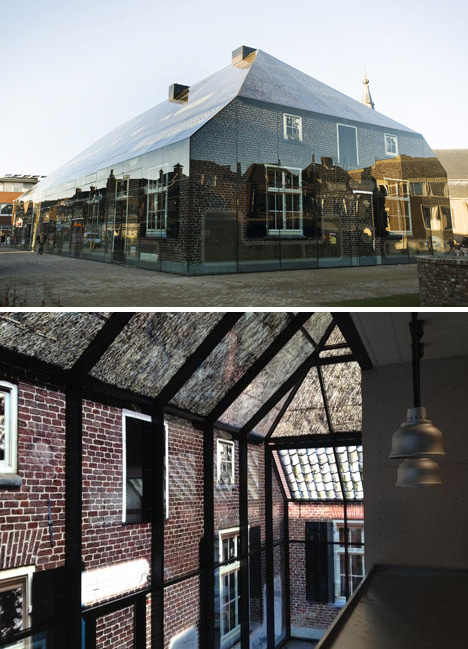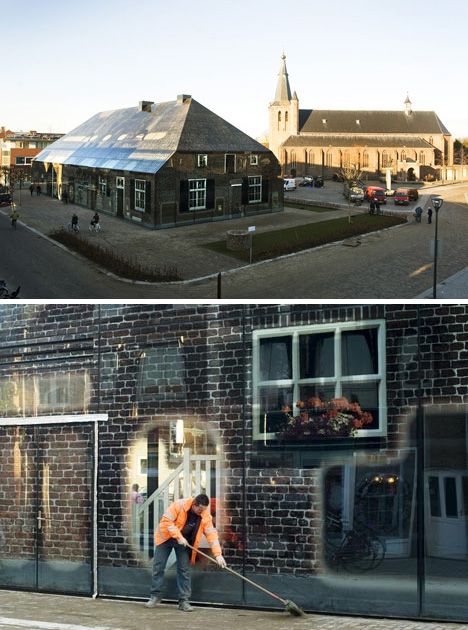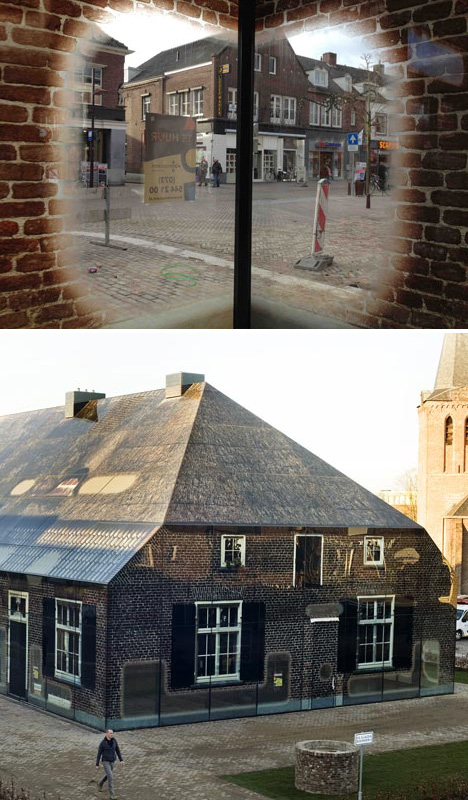For decades, no one could quite agree on what should go in this critical location between the town hall and central church in war-damaged Schijndel, Holland … until MVDRV showed up with a radical proposal remixing old and new. Their solution: printing local historical-building photographs right onto glass.
It was agreed that the new structure should respect the original building envelope and regional vernacular without a kitschy attempt at reproducing a false past. Hence, this glazed facade made to look like a traditional thatch-roof brick farmhouse via images provided by photographer Frank van der Salm.
Window and door openings are given curious treatment, shown as semi-erased visual voids that do not conform to the structure depicted on the printed-glass surfaces. Close up, they provide useful cues to pedestrians – at a distance, they simply blend into the building or hide among reflected architecture.
Inside this so-called Glass Farm envelope, shops, restaurants and offices look back out on the mirror-image translucent farmhouse, providing fascinating interactions both within and without. Whether or not you love this solution, it raises compelling questions – instead of masquerading as a faux-historical structure, MRVDV’s smoke-and-mirrors approach invites interactions with history via an overlapping combination of illusion, photography, reflection and reality.



